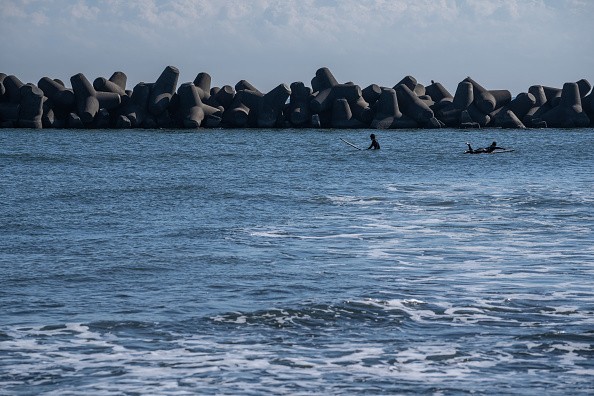Humans have a significant impact on the Earth, but when did we become the primary engine of change in its ecosystems?

Many analysts consider the 1950s a watershed moment in various societal trends. Since then, the world's population has tripled. Fertilizer and water use grew as more food was grown than ever before. Motorway development accelerated to expand automobile ownership, while foreign flights started off to meet a burgeoning need for tourism.
Growing Human Activity
Human activity on the planet has grown to unprecedented dimensions. The postwar period became known as the "Great Acceleration," and many people think it was around this time that the Anthropocene - the geological epoch during which human activity superseded natural factors as the most significant impact on the functioning of Earth's living systems - was born.
On the other hand, researchers are studying the water and experiencing déjà vu. Over the last three decades, patterns identified on land 70 years ago have been observed in the water. We're amid a "Blue Acceleration," which will have major implications for life on the blue planet.
Land-Based Resources
As land-based resources have become scarce, people's aspirations and expectations have shifted to the ocean as a new source of development. Take, for example, deep-sea mining. Due to rising commodity prices, the worldwide seabed and its mineral wealth have piqued economic interest in recent years.
According to the International Monetary Fund, the price of gold has increased by 454 percent since 2000, silver by 317 percent, and lead by 493 percent. Since 2001, the International Seabed Authority has leased 1.4 million square kilometers of seabed for exploratory mining activities.
In some industries, technological advances have driven these trends. Almost all offshore wind farms have been built in the previous 20 years. The marine biotechnology industry was barely existent before the turn of the century, and since 2000, more than 99 percent of genetic sequences from marine creatures discovered in patents have been registered.
Also Read : Is Climate Change Accelerating Ocean Currents?
Global Population and Blue Acceleration

The world population peaked at 6 billion people in the 1990s when the Blue Acceleration began. There are around 7.8 billion people on the planet now. Since 2000, the volume of desalinated saltwater created in water-scarce locations such as the Middle East, Australia, and South Africa has increased threefold. Since 2000, the importance of products moving worldwide via shipping has increased roughly fourfold.
Even among notable scientists, the ocean was formerly assumed to be too huge to be affected by human activities.
Consider the Norwegian shoreline. A multibillion-dollar ocean-based oil and gas business, aquaculture, popular cruises, major shipping routes, and fisheries call the region home. These interests were contending for the same ocean space, and their demands are becoming more and cheval chevalier.
By 2050, aquaculture will have produced five times as many salmon, and the region's tourist business will have welcomed five times as many people. Meanwhile, massive offshore wind farms have been planned on the southern coast of Norway.
Vast But Not Infinite
Although the sea is enormous, it is not infinite. Sea lice have increased in wild populations thanks to escaped farmed salmon, causing difficulties with Norwegian fisheries. An oil and gas sector catastrophe might have severe consequences for local seafood, tourism, and the export market for seafood.
Fundamentally, the strain on ocean ecosystems is increasing, and we do not know as much as we would want about them. Fisheries management, according to one ecologist, is similar to forestry management. You're counting fish instead of trees, only you can't see them, and they move.
Ocean exploration has tended to come before ocean exploration. The scaly-foot snail is a classic example. This deep-sea mollusk was found in 1999 and was listed as an endangered species on the IUCN Red List by 2019. Why?
According to experts, the species is only found in three hydrothermal vent systems more than 2,400 meters below the surface of the Indian Ocean, encompassing less than 0.02 square kilometers. Two of the three vent systems are now leased for exploration mining.
Billionaires who fantasize about colonizing space can do it closer to home. Even as the Blue Acceleration depletes the ocean's resources, this vast region remains as enigmatic as space. The seabed has been mapped with a better resolution than Mars and the Moon.
Water Life
Life in the water has persisted for two billion years longer than on land, although scientists have yet to classify 91% of marine species. Their genetic modifications may aid scientists in developing future antibiotics and therapies, but they may vanish long before that is achievable.
The time is opportune to steer the Blue Acceleration toward more sustainable and equitable paths. The UN Decade of Ocean Science for Sustainable Development is set to begin. A new international treaty on ocean biodiversity is in the last stages of negotiation. The UN Ocean Conference in Lisbon in June 2020 will bring together governments, corporations, universities, and civil society.
Questions Left Unanswered
Many fundamental questions remain, though. What is the source of the Blue Acceleration? Who stands to gain from it? Who is being forgotten or left out?
These are all pressing concerns, but probably the most essential and challenging to address is how to foster relationships and involvement among these disparate groups. Otherwise, the Blue Acceleration's drivers will be like the fish in the ecologist's analogy: always moving, undetectable, and hard to control - until it's too late.
Related Article : Fear, Uncertainty, and Doubt Against Global Warming Remain High Despite Pressing Evidence
For similar news, don't forget to follow Nature World News!
© 2025 NatureWorldNews.com All rights reserved. Do not reproduce without permission.





